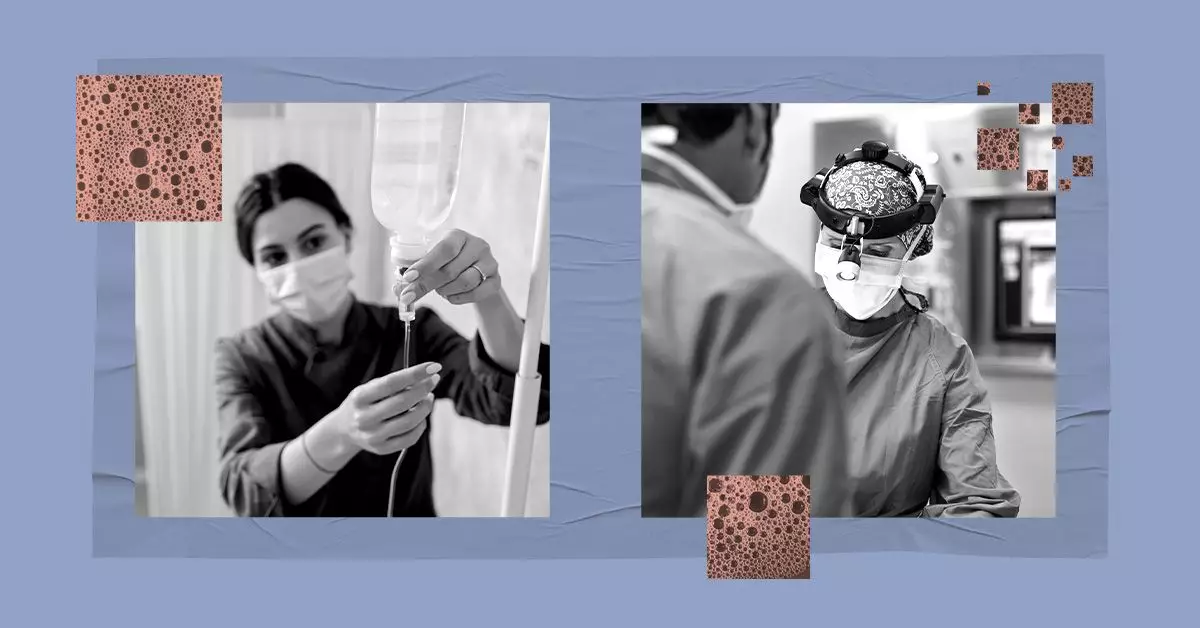Ewing sarcoma, a rare and aggressive form of cancer primarily affecting bones and surrounding soft tissues, poses significant challenges for patients, particularly children, adolescents, and young adults. This malignancy necessitates a multifaceted approach to treatment, which often involves a collaborative effort from various medical fields, including oncology, surgery, and radiation therapy. In this article, we will explore the primary treatment modalities for Ewing sarcoma, the considerations influencing treatment decisions, and the importance of ongoing clinical research.
Ewing sarcoma is categorized as an “aggressive cancer” due to its potential to grow rapidly and metastasize, or spread, to other parts of the body. Such a diagnosis can be overwhelming for patients and families alike. Recognizing that this form of cancer isn’t merely a single disease but a spectrum of presentations and responses is crucial. The management process begins with a thorough assessment of various factors, including the location of the tumor, its size, the specific stage of cancer, and whether metastasis has occurred. Each of these factors significantly influences the chosen course of treatment.
A tailored, multidisciplinary approach is essential in treating Ewing sarcoma effectively. The primary goal is twofold: to eradicate cancer cells and to preserve the functionality of affected areas as much as possible. Treatment modalities generally include:
– **Chemotherapy**: This is a cornerstone of treatment aimed at shrinking tumors and targeting microscopic cancer cells that might have spread throughout the body. Common regimens might include drugs like vincristine, doxorubicin, cyclophosphamide, ifosfamide, and etoposide, administered in cycles to enhance their effectiveness while mitigating side effects.
– **Surgery**: In cases where the tumor can be completely resected, the surgical team typically aims to remove the tumor along with surrounding tissue while preserving important structures whenever possible. Limb-sparing techniques are favored over amputation to maintain mobility and functionality.
– **Radiation Therapy**: High-energy beams are used primarily when surgery is not an option or as an adjunct to it to target residual cancer cells. Advancements such as intensity-modulated radiation therapy have improved safety profiles, allowing for greater precision and reduced exposure to healthy tissues.
– **Stem Cell Transplantation**: In select cases, particularly those involving high-dose chemotherapy or aggressive metastatic disease, stem cell transplants may offer a chance for patients to recover their bone marrow function and improve long-term survival.
Each treatment plan is highly individualized, reflecting the unique characteristics of a patient’s disease and their overall health profile.
When Ewing sarcoma is metastatic, the treatment strategy often shifts towards systemic management. Initially, systemic chemotherapy is utilized to target cancer throughout the body. Depending on the metastasis’ location and extent, radiotherapy or surgical options may also be considered for management of specific sites.
For recurrent Ewing sarcoma, treatment revolves around the complexity of recurrence—where it has returned and how it affects the patient’s overall health. Clinical trials can also serve as a beacon of hope, allowing access to novel therapies designed to combat resistant forms of the disease.
The treatment regimen for Ewing sarcoma comes with its fair share of side effects, which may include fatigue, nausea, hair loss, and increased susceptibility to infections. Management strategies involve medications and supportive care measures such as physical therapy, psychological counseling, and nutritional support, aiming to enhance the quality of life for patients.
Moreover, ongoing monitoring for late effects of treatment is vital, particularly since Ewing sarcoma predominantly affects a younger population who face unique challenges as they grow older.
Innovation is a critical component in the fight against Ewing sarcoma. Clinical trials offer a pathway for patients to explore new treatments and contribute to the advancement of knowledge in this area. Researchers are investigating targeted therapies focusing on the molecular pathways driving Ewing sarcoma, immunotherapy aimed at woosting the body’s natural defenses against cancer, and new drug combinations that might enhance the efficacy of existing treatments while minimizing adverse effects.
Ewing sarcoma represents a formidable challenge that requires a concerted, multi-disciplinary effort to manage effectively. Through a combination of chemotherapy, surgery, radiation therapy, and innovative remedies available through clinical trials, patients are afforded the best possible chances for favorable outcomes. As research continues to evolve and deepen our understanding of this rare cancer, hope remains alive for improved treatments and better lives for those affected by Ewing sarcoma. Resources, support systems, and a strong medical team play indispensable roles in navigating this journey, enabling both patients and their families to find solace amidst the complexities of cancer treatment.

